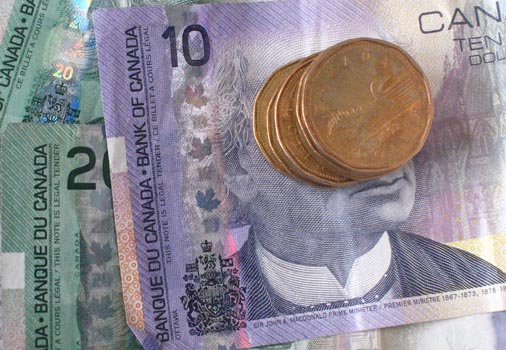Critics spend a lot of time telling Canadians that they should disregard the Occupy movement. They claim that the sins of Wall Street didn’t happen here, so Canadians have no business making such a fuss.
The financial sector’s PR machine has had great success convincing folks that Canadian banks are pure as the driven snow. Their message incessantly repeats their claim that there were no bailouts of Canadian banks during the 2008 financial crisis. You Occupiers have nothing to complain about, they say. Maybe in the U.S. people can be mad. But not here.
Since bank bailouts are presented as some kind of litmus test for the legitimacy of Canadian finance, we need to deal with this red herring.
It seems that in the strange world of spin about financial issues, a bailout is in the eyes of a beholder. It is true that Canadian banks were not nationalized, nor did they receive direct equity injections from the government. But that is far from the whole story.
The Canadian government gave banks plenty of access to cash in other ways. By providing channels to allow banks to get liquid funds from the government in these other ways, Canadian banks were able to avoid the meltdown that was bringing down banks in the U.S. and Europe. Canadian banks were quickly and extensively protected before they needed even more extreme help.
How did the government pump these liquid funds into banks and other financial sector firms?
The biggest government initiative was the “Insured Mortgage Purchase Program,” which was part of a $200 billion “Extraordinary Financing Framework” announced in response to the financial crisis. The Insured Mortgage Purchase Program enabled a crown corporation, the Canadian Mortgage and Housing Corporation (CMHC), to buy a certain type of financial asset (securities composed of CMHC-insured mortgages). In return for the sale of these securities, banks got the cash they needed to withstand the financial crisis. At a time when liquid funds were disappearing from financial markets, banks’ ability to convert mortgage securities into liquid cash was a pretty sweet deal.
The Finance Department states that banks received $69.35 billion from the Insured Mortgage Program by the time it was allowed to sunset in 2010. Initially, the government was supposed to provide only $25 billion, but it repeatedly increased this ceiling until the program offered a maximum of $125 billion — far more than the banks ended up using. By demonstrating that government generosity exceeded banks’ needs, financial markets got the message loud and clear that the Canadian government would do whatever was necessary to protect Canadian banks.
Because financial markets were reassured that Canadian banks were tightly wrapped in an extensive government safety net, Canadian banks were sheltered from the most punishing aspects of the financial crisis. This shelter allowed banks to avoid getting into a situation in which they would need a more extreme form of bailout.
Those that narrowly define a bailout as injecting capital into a bank argue that this manoeuvre to allow banks to access liquid cash by selling assets was not a bailout. But this hair-splitting is a little too precious. As one investment analyst has explained:
There is only a subtle distinction between injecting capital into a bank and relieving it of assets so that it can avoid a capital injection. Kind of like your Dad temporarily buying your bike from you when you ran out on money in university, and then selling it back to you six months later when you were flush from a summer job. The notion that Canada’s “free market” took care of itself [in the 15 months after the financial crisis] is poppycock.
The Bank of Canada also pitched in to support banks. The Bank of Canada expanded its “extraordinary liquidity facilities” to create more flexible arrangements for banks to “borrow” funds from the central bank. At its peak, these facilities provided about $41 billion to help financial institutions weather the crisis.
The Canadian government was not the only government to support Canadian banks. The largest five Canadian banks which are active in the U.S. banking market received US$111 billion via American programs to support Wall Street.
To say Canadian banks got no bailout is to disregard that the federal finance department and the Bank of Canada moved heaven and earth to ensure that Canadian banks were protected before they needed even more extensive support. It is manipulative and disingenuous to retell history as though Canadian banks sailed through the financial crisis on their own steam.
Nor is this emergency support the only favour enjoyed by Canadian banks. The Canadian banking sector exists in its present form because many government policies protect and nurture it. For example, Canadian banks were protected from getting themselves into a Canadian version of the subprime crisis largely because the Canadian government has played such an enormous role in making sure that mortgages in Canada are insured against default, often by the government itself.
There is plenty to protest about the cozy position enjoyed by banks in Canada. Bank lobbyists would love to silence this protest with their incessant sound-bite denying that banks were bailed out. Protesters must not be fooled by this spin.
Economist Ellen Russell is a research associate with the Canadian Centre of Policy Alternatives. Her column comes out monthly in rabble.ca.



